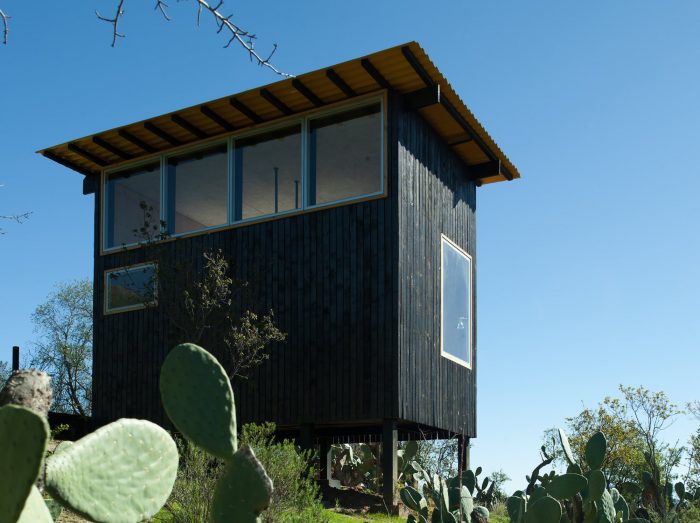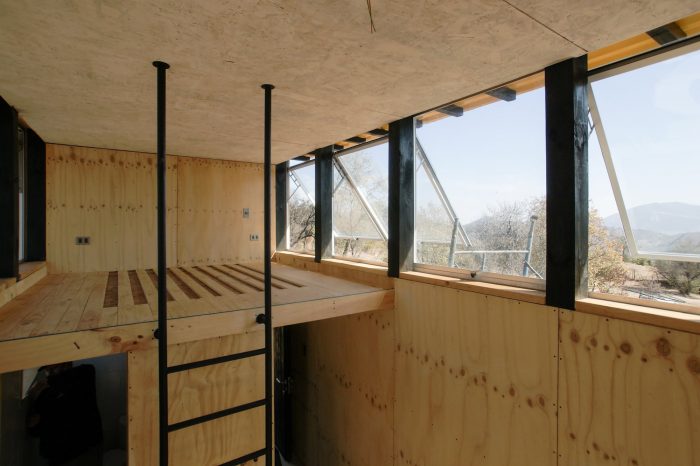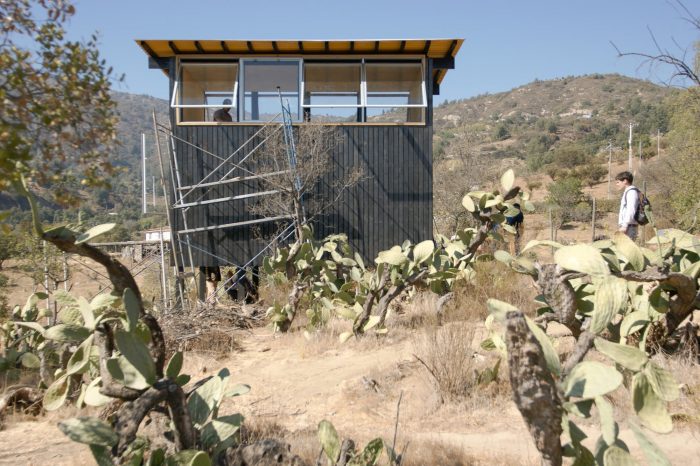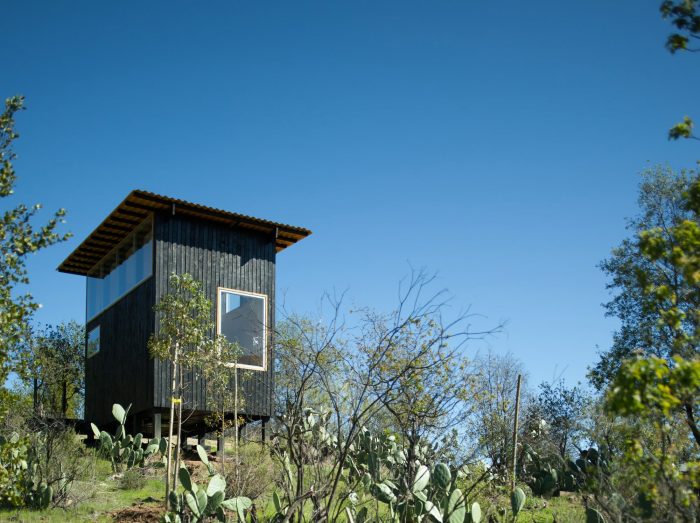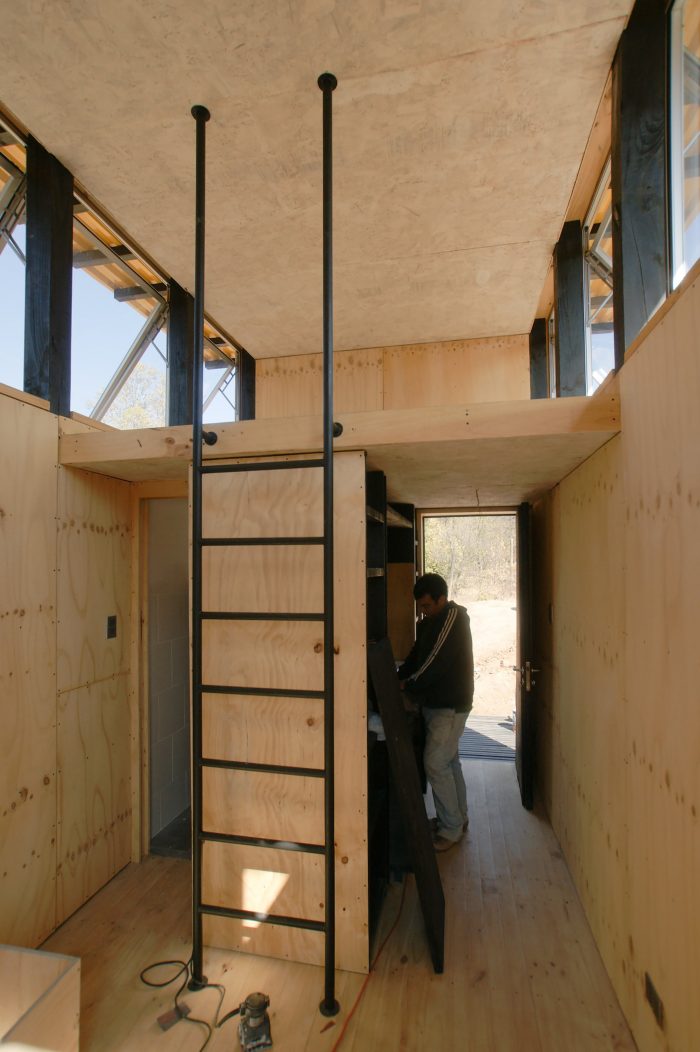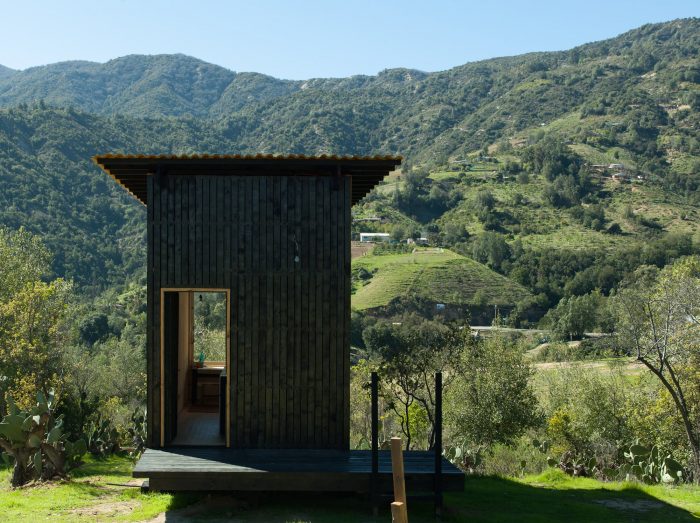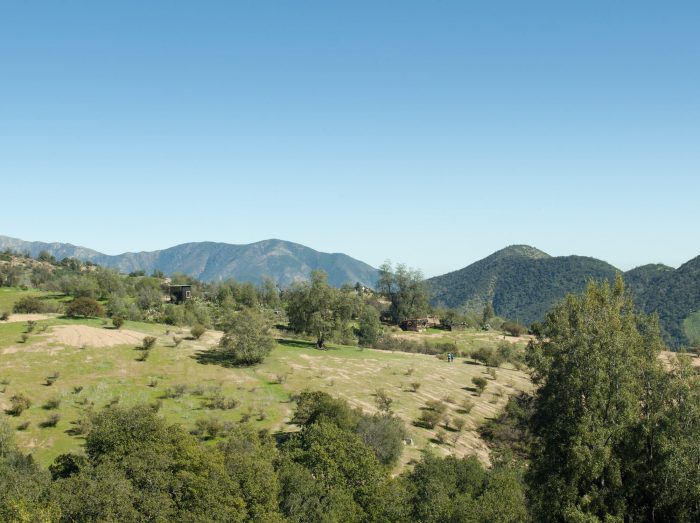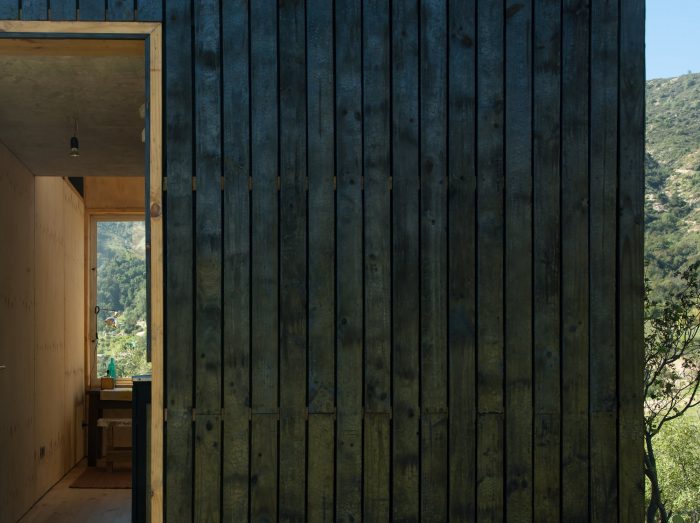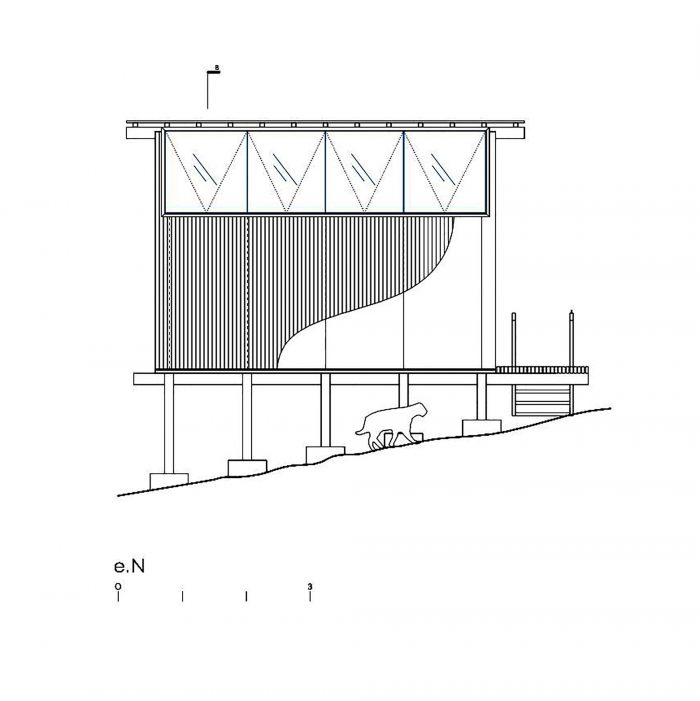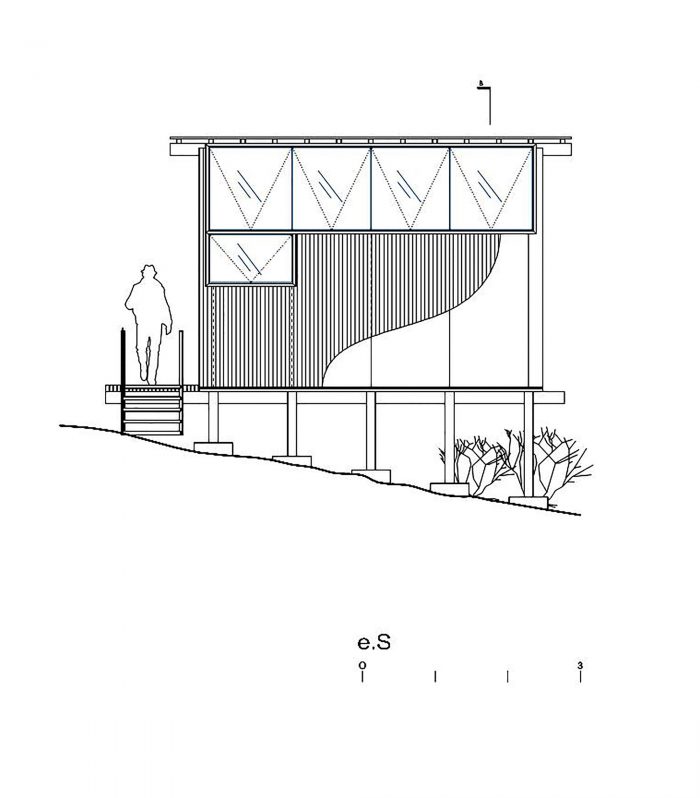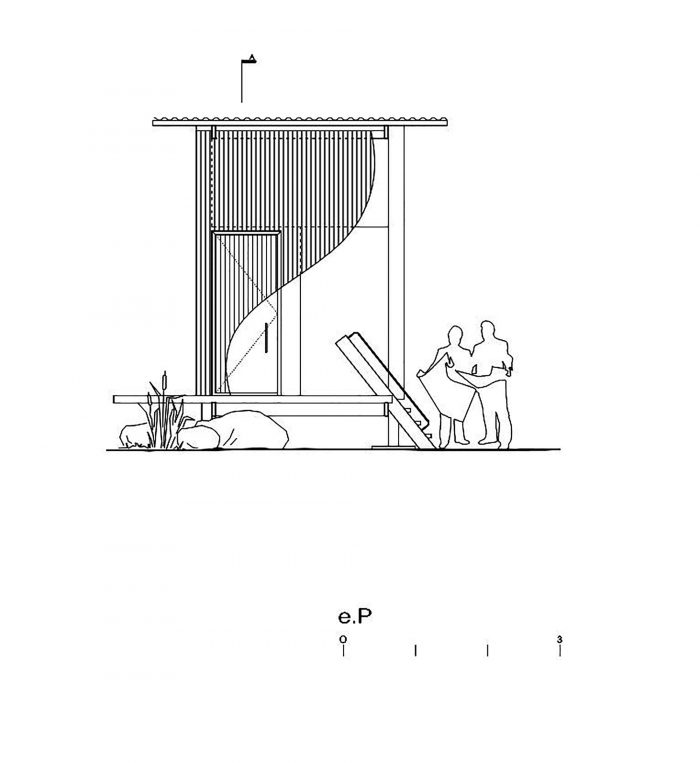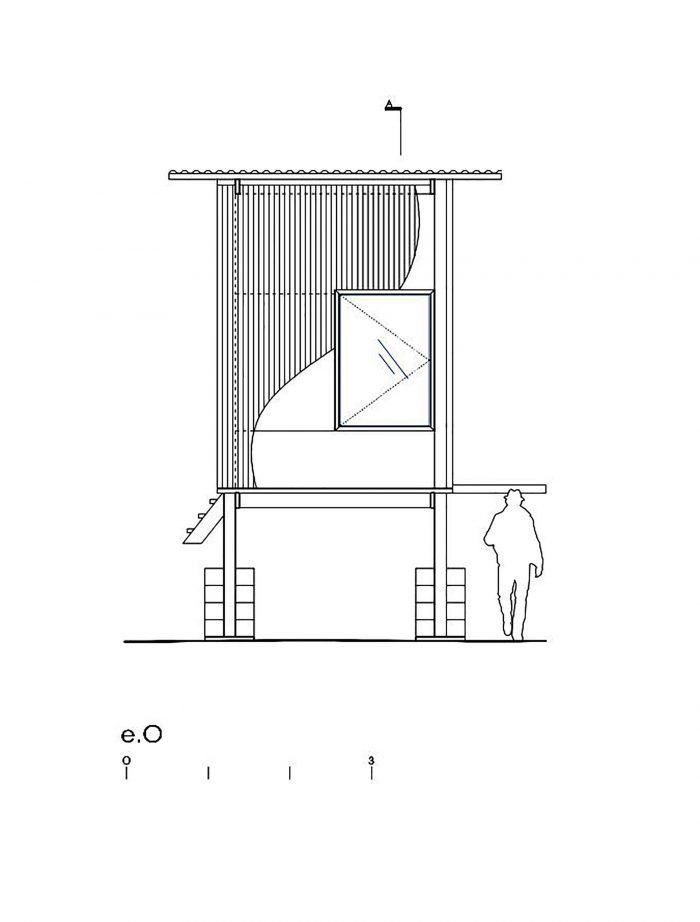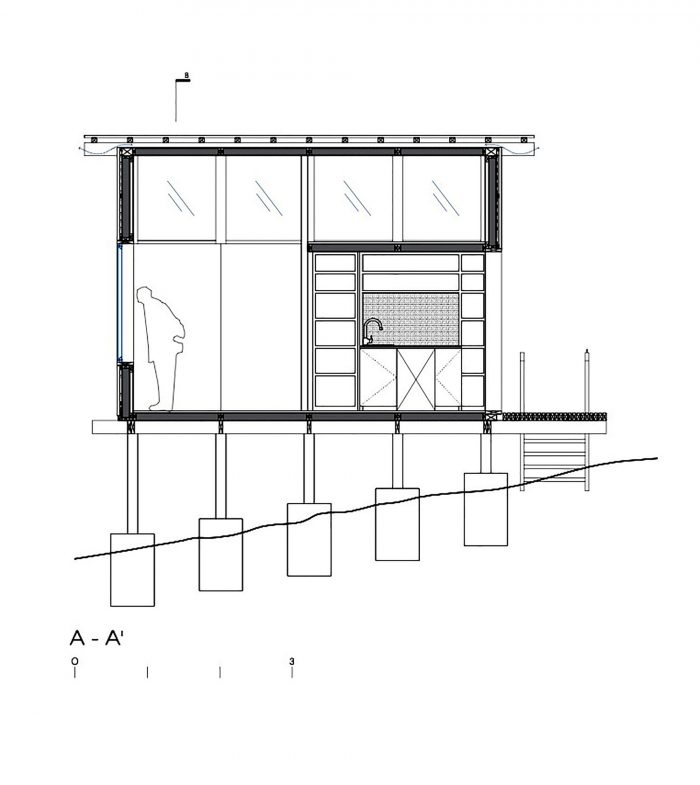作为一个山区的藏身处,烧焦的小屋在圣地亚哥居民的一个相当不寻常的位置上定居。在汽车时代之前,一条蜿蜒的道路穿过海岸山脉连接着首都和港口。该地区充满了回忆早年的历史场所。废弃的纪念碑、战斗遗址、金矿如今仍被遗弃。
Commissioned as a mountain hideout, the Charred Cabin settles on a rather unusual location for Santiago inhabitants. Before the automobile era, a winding road linked the capital and the port across the Coastal Range. The area is full of historic places that recall the early years. Derelict Monuments, battle sites, gold mines remain nowadays abandoned.
在占主导地位的慢车道乡村中,一对学术夫妇与-同龄人分享这个地方,旨在从忧郁的气氛中获利。
Among the dominant slow-path countryside, an academic couple sharing the site with –peers- aim to profit from the melancholic atmosphere.

最低限度的住所
为了符合预算,小木屋内需要完成的活动明确地很简单:一个供两人吃饭、睡觉和阅读的地方,其他一切都要在外面抵消。与周围的开放环境相比,小木屋被设计成一个与外部有一定联系的庇护所,这可以在两个时刻理解。
Minimum dwelling
To fit in a budget the activities required to fulfil within the cabin were explicitly simple: a place to eat, sleep and read for two, everything else is to be offset outside. In contrast with the open surrounding, the cabin is designed as a shelter with a measured connection with the exterior, which can be understood in two moments.
入口层(1)由一扇具有特殊高度的窗户描述,它塑造了阁楼房间的活动,而烹饪和洗澡则由夹层压住。在平面图的中间,一个钢梯允许进入阁楼(2),它与广泛的水平窗户形成了标志性的山脉。
The entrance level (1) is depicted by a single window with a particular height, which shapes the activities of the lofty room, whereas cooking and bathing are pressed by the mezzanine. In the middle of the floorplan a steel ladder allows for an attic (2) which differences with extensive horizontal windows framing iconic mountains.
建筑
最初是作为一个自建的永久性帐篷,这个小屋是由SIP板形成的。预制模块的排列和比例,是为了在陡峭的地形上突出高跷。由三个人组成的团队迅速组装起来,施工的简易性是必须的。
Construction
Originally meant as a self-built permanent tent, the cabin takes shape from SIP panels. The prefab modules are arranged and proportioned in order to stand out from the steep terrain on stilts. Swiftly assembled by a party of three, the easiness of construction was mandatory.
为了避免使用化学产品,覆盖层的松木板按照传统的指示在现场烧制。一层薄薄的肥皂必须防止小屋腐烂和不费吹灰之力的风化。在内部,胶合板覆盖了电力和供水管道,同时提供了一个温暖的装饰。
In order to avoid chemical products, the cladding pine planks were charred onsite following traditional instructions. A thin layer of sooth must prevent the cabin from decay and weather effortlessly. On the inside plywood panels cover electricity and water piping whilst providing a warm finishing.
Architects: DRAA
Area : 15 m²
Year : 2014
Photographs :Felipe Camus
Design Team : Nicolas del Rio, Felipe Camus
Collaborators : Gonzalo Pulgar, Magdalena Besomi, Freddy Alvarez
Constructor : Hector, Felipe and Matias Molina, Tito Lizana, Sergio Ramirez Sr&Jr.
City : Olmué
Country : Chile



